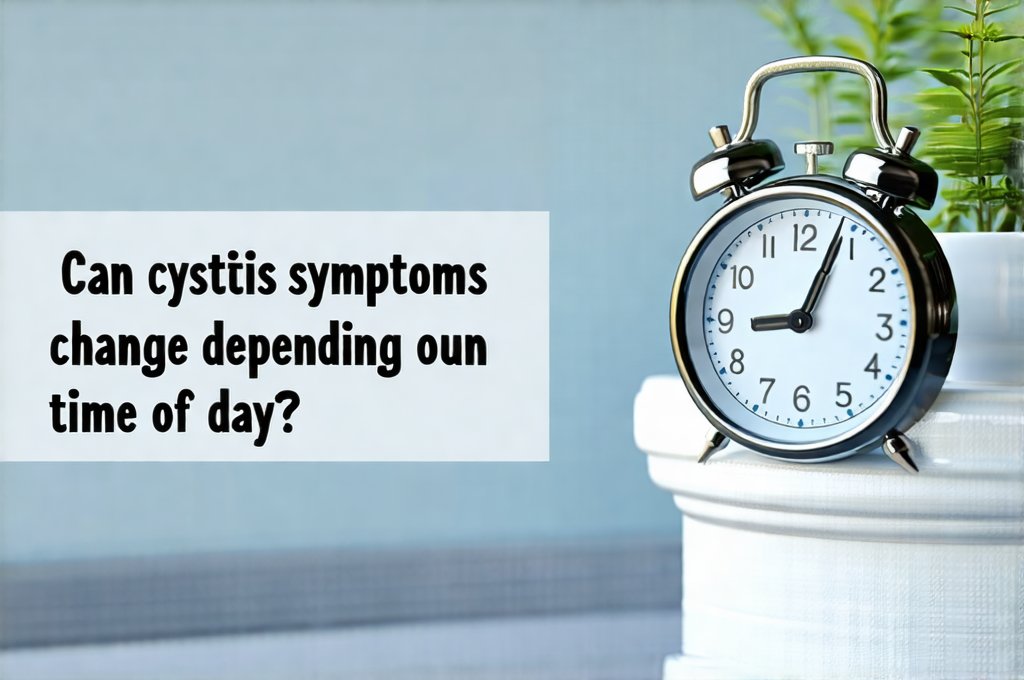Cystitis, often referred to as a urinary tract infection (UTI), is a common ailment affecting millions worldwide, predominantly women due to anatomical differences. While many associate it with a constant, burning sensation during urination, the reality is far more nuanced. Symptoms can fluctuate in intensity and even change throughout the day, leading to confusion and uncertainty for those experiencing them. This variability isn’t necessarily a sign of something worsening or an indication that the infection has spread; rather, it’s often tied to fluid intake, bladder fullness, activity levels, and even hormonal shifts. Understanding these fluctuations is key to managing symptoms effectively and seeking appropriate care when necessary.
The frustrating aspect of cystitis lies in its ability to mimic other conditions and present with a wide spectrum of symptoms. It’s not always the stereotypical “burning” feeling; it can manifest as pressure, discomfort, or even a dull ache. This variability contributes to misdiagnosis or delayed treatment. Moreover, many individuals find their symptoms are more pronounced at certain times, making daily activities challenging. Recognizing these patterns – whether it’s increased urgency upon waking, heightened discomfort after exercise, or reduced symptoms with hydration – is the first step towards better self-management and informed communication with healthcare professionals. It’s vital to remember that symptom changes don’t automatically equal a crisis; they are often part of the natural course of the infection and how it interacts with your body. Many wonder, can UTI symptoms disappear on their own?
Understanding Symptom Fluctuation Throughout the Day
The dynamic nature of cystitis symptoms stems from several physiological factors. Bladder fullness plays a significant role – as the bladder fills, pressure increases, potentially exacerbating discomfort and urgency. This explains why symptoms might be more noticeable after prolonged periods of holding urine or during activities that put pressure on the bladder (like lifting heavy objects). Hydration levels are also critical; dehydration concentrates urine, increasing irritation and intensifying burning sensations. Conversely, adequate hydration dilutes urine, easing discomfort but potentially leading to increased frequency. Finally, physical activity impacts symptom presentation – exercise can increase blood flow to the pelvic region, sometimes heightening awareness of bladder sensations.
Consider a typical day: symptoms might be mild upon waking, becoming more pronounced as you consume fluids throughout the morning and engage in activities. Afternoon may bring relief with increased hydration and rest, but evening could see a resurgence of urgency due to reduced fluid intake or changes in body position during sleep. These fluctuations aren’t unusual; they are expected given how our bodies interact with bladder function and external influences. It’s important to track these patterns to identify personal triggers and adjust lifestyle choices accordingly.
Moreover, hormonal shifts can also play a role, particularly in women. During menstruation or perimenopause, fluctuating estrogen levels can impact the urinary tract’s sensitivity, potentially exacerbating cystitis symptoms. This explains why some women experience more frequent infections during certain phases of their menstrual cycle. Understanding these hormonal influences is crucial for personalized symptom management and preventative strategies. Can cystitis be a side effect of menstruation?
Common Symptom Variations & Timing
Cystitis doesn’t always present as a constant barrage of discomfort. Instead, individuals often describe waves of urgency or pain that ebb and flow throughout the day. – Urgency may be more pronounced in the morning due to concentrated urine overnight, lessening with initial voiding but returning as fluid intake increases. – Burning sensations might intensify after consuming acidic foods or caffeinated beverages, while feeling less acute when well-hydrated. – Pelvic pressure could become more noticeable during periods of inactivity or prolonged sitting, easing with movement and stretching.
A key observation is that symptoms often feel worse before urination and then briefly subside afterward, only to return as the bladder refills. This pattern underscores the link between bladder fullness and symptom intensity. Some individuals report increased discomfort at night, potentially due to lying down which increases pressure on the bladder or reduced fluid intake leading to more concentrated urine. It’s also common for symptoms to feel more intense during times of stress or anxiety, as these emotional states can heighten sensitivity to bodily sensations. Recognizing these specific variations allows for a more nuanced understanding of your own experience and helps differentiate between normal fluctuations and potential complications.
Identifying When Symptom Changes Warrant Medical Attention
While fluctuating symptoms are often part of the cystitis experience, certain changes should prompt a visit to a healthcare professional. – Severe pain that doesn’t subside with urination or is accompanied by fever, chills, or back pain could indicate a kidney infection (pyelonephritis), which requires immediate treatment. – Blood in the urine (hematuria) should always be evaluated by a doctor, even if it’s just a small amount. While sometimes harmless, it can also signal a more serious underlying issue. – Persistent symptoms that don’t improve with self-care measures after 24-48 hours or worsen despite treatment require medical attention.
It is crucial to differentiate between typical fluctuations and alarming changes. If you notice a sudden, drastic increase in pain intensity, difficulty urinating, or new symptoms like nausea or vomiting, seek medical advice immediately. Don’t hesitate to consult your doctor if you are unsure whether your symptom changes are normal or require intervention. Remember that early diagnosis and treatment are essential for preventing complications and ensuring optimal recovery. In some cases, can you have cystitis symptoms from bladder stones?
The Impact of Lifestyle Factors on Symptom Presentation
Lifestyle choices significantly influence cystitis symptoms. – Diet plays a crucial role; acidic foods (citrus fruits, tomatoes), spicy dishes, caffeine, alcohol, and artificial sweeteners can irritate the bladder and exacerbate discomfort. Conversely, staying well-hydrated with water is vital for diluting urine and reducing irritation. – Clothing choices matter too: tight-fitting clothing can restrict airflow and create a humid environment conducive to bacterial growth. Opting for breathable cotton underwear and loose-fitting clothes can help prevent infections.
- Hygiene practices are also important; wiping from front to back after using the toilet minimizes the risk of transferring bacteria from the rectum to the urethra. Additionally, urinating shortly after intercourse can help flush out any bacteria that may have entered the urinary tract. Finally, stress management techniques like yoga or meditation can help reduce anxiety and potentially lessen symptom severity.
Self-Management Strategies for Fluctuating Symptoms
Effectively managing cystitis symptoms requires a proactive approach tailored to individual experiences. – Maintain adequate hydration: Drink plenty of water throughout the day, aiming for pale yellow urine as an indicator of proper hydration. – Practice timed voiding: Empty your bladder regularly, even if you don’t feel a strong urge, to prevent excessive fullness and reduce pressure. – Avoid irritants: Identify and eliminate dietary or lifestyle factors that exacerbate your symptoms.
- Consider over-the-counter pain relief: Medications like phenazopyridine can help alleviate burning sensations, but they only mask the symptoms and shouldn’t be used as a substitute for antibiotic treatment if an infection is present. – Explore natural remedies: Cranberry products (juice or supplements) are often suggested to prevent UTIs, although scientific evidence supporting their effectiveness is mixed. It’s always best to discuss any supplements with your doctor before taking them. Ultimately, understanding how your symptoms fluctuate and adapting your lifestyle accordingly can significantly improve your quality of life while managing cystitis.





















